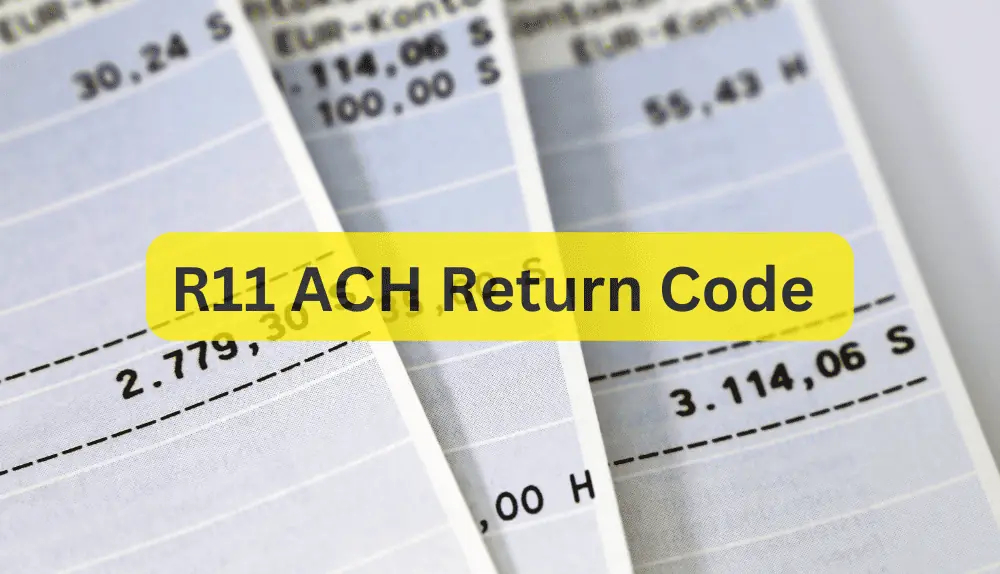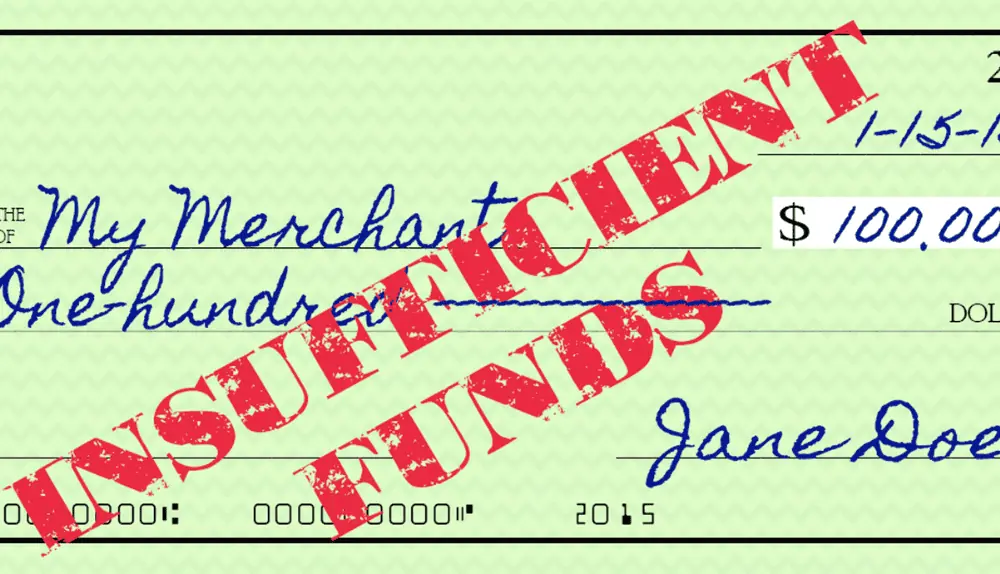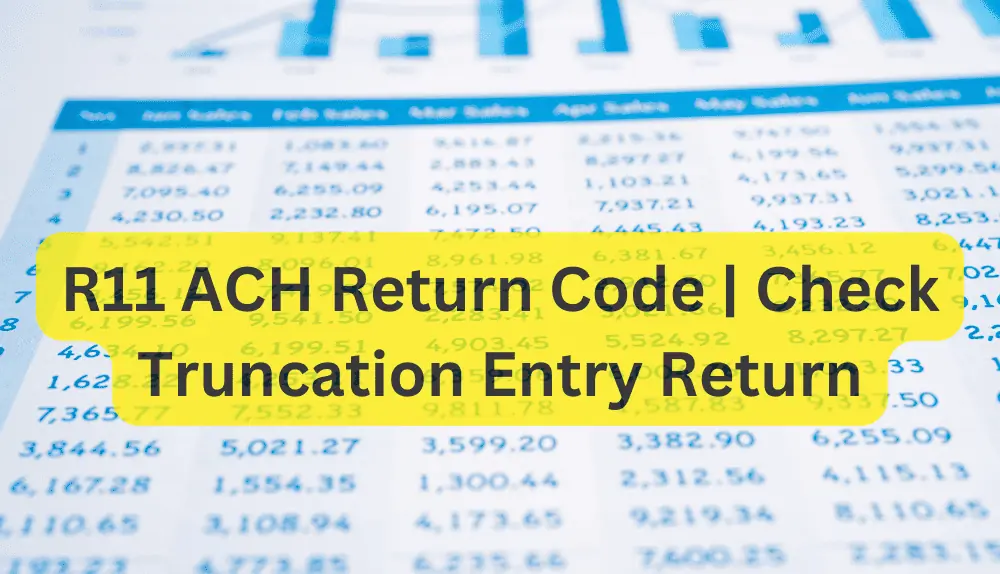In the fast-paced world of modern banking, where digital transactions have become the norm, the term “R11 ACH Return Code” might sound like cryptic jargon to most. Yet, hidden within this enigmatic code lays a fascinating tale of financial intricacies and security measures. Enter the realm of Check Truncation Entry Return, a captivating aspect of the Automated Clearing House (ACH) system that unravels the captivating story behind returned checks.
In this journey, we will explore the inner workings of the ACH network, demystify the mysterious R11 code, and shed light on the crucial role it plays in safeguarding financial transactions. Join us as we venture into the heart of banking technology and unravel the secrets of the R11 ACH Return Code!
What Does R11 ACH Return Code Mean?
The ACH R11 Return Code, also known as “Check Truncation Entry Return,” is a specific code used in the Automated Clearing House (ACH) network to indicate that a check truncation entry has been returned unpaid. In simpler terms, it signifies that an electronic check deposit was attempted, but the transaction was rejected due to certain reasons.

Check truncation is a process where a physical paper check is converted into an electronic format to facilitate faster and more efficient transactions. When a check is deposited electronically, the relevant information, such as the account number and routing number, is captured and processed through the ACH system.
The R11 Return Code is triggered when the receiving bank, which acts as the check recipient, encounters issues while processing the electronic deposit. Some common reasons for this return code may include insufficient funds in the account, invalid account numbers, or even an expired check.
For the originator of the electronic deposit, typically a business or an individual, the R11 code serves as a notification that the check truncation attempt was unsuccessful. Subsequently, they will need to reconcile the payment and may choose to resubmit the transaction or seek alternative payment methods.
Understanding ACH return codes like the R11 is crucial for all parties involved in electronic transactions as they provide insights into the status of payments and help maintain the integrity and security of the ACH system.
Reasons R11 ACH Return Code Can Occur
The ACH R11 Return Code, also known as “Check Truncation Entry Return,” is a standard code used in the Automated Clearing House (ACH) network to signify that a check truncation entry has been returned unpaid. This code can occur for various reasons, reflecting the complexities and safeguards within the ACH system. Here are some common reasons why the ACH R11 Return Code may occur:
Insufficient Funds
One of the most prevalent reasons for the ACH R11 Return Code is insufficient funds in the account. If the account holder does not have enough money to cover the amount of the electronic check deposit, the transaction will be rejected, triggering the R11 code.

Invalid Account Number
If the account number provided for the electronic deposit is incorrect or does not match the intended recipient’s account, the receiving bank will be unable to process the transaction, leading to an R11 return.
Closed Account
When an account is closed or no longer active, any attempted electronic deposits will be unsuccessful, resulting in the R11 code.
Stopped Payment
In some cases, the account holder may have issued a stop payment order on the check or the electronic transaction, causing the receiving bank to return the deposit with the R11 code.
Account Restrictions
Certain accounts may have specific restrictions or limitations on the types of transactions they can accept. If the electronic deposit violates these restrictions, the bank will return the payment with the R11 code.
Expired Check
If the electronic deposit is based on an expired physical check, the transaction will be rejected with the R11 code.
Mismatched Amounts
Discrepancies between the amount specified in the electronic deposit and the actual check amount may lead to an R11 return.
Encoding Errors
Errors during the check truncation process, such as incorrect encoding of the check information, can cause the deposit to be rejected with the R11 code.
Duplicate Transactions
If the same check truncation entry is submitted multiple times, it will likely result in an R11 return as duplicates are not allowed within the ACH system.
Understanding the reasons for the ACH R11 Return Code is vital for both originators and receivers of electronic transactions. It helps businesses and individuals identify issues with their payments, enabling them to rectify errors, ensure seamless transactions, and maintain the integrity of the ACH network.
Solutions to Fix the R11 ACH Return Code
Addressing the ACH R11 Return Code, also known as “Check Truncation Entry Return,” requires careful attention to the issues that caused the code to occur. Implementing solutions to fix the R11 code involves a collaborative effort between the originators of the electronic deposits and the receiving banks. Here are some solutions to consider in order to reduce and resolve ACH R11 Return Code occurrences:
Improved Communication and Verification
Originators must ensure that they have accurate and up-to-date information for electronic deposits. This includes verifying recipient account numbers and ensuring that the account is active and able to accept ACH transactions. Communication with the receiving bank or the account holder can help confirm account details before initiating the deposit.
Real-Time Account Balance Checks
Implementing real-time account balance checks before initiating an ACH transaction can help originators identify and avoid situations where the account lacks sufficient funds. This proactive measure can significantly reduce the instances of the R11 code due to insufficient funds.
Automated Reconciliation
Utilizing automated reconciliation processes can help originators quickly identify ACH R11 Return Code occurrences and take appropriate action. Automated systems can flag unsuccessful transactions and initiate follow-up actions, such as resubmitting payments or contacting the account holder for resolution.
Enhanced Error Handling and Alerts
By implementing robust error handling and alerts, originators can be immediately notified when an ACH transaction encounters an issue. This allows for prompt investigation and resolution, reducing the likelihood of the R11 code.
Education and Training
Both originators and receiving banks should invest in educating their staff about ACH rules and regulations, including the specific scenarios that lead to the ACH R11 Return Code. Training can help identify and prevent errors, ensuring smoother ACH transactions.
Secure and Efficient Check Truncation Process
To minimize encoding errors and other issues during the check truncation process, originators should use secure and efficient methods for converting paper checks into electronic format. Utilizing reliable technology and quality control measures can help reduce the occurrences of the R11 code.
Regular Transaction Reviews
Conducting regular reviews of ACH transactions can help identify patterns or recurring issues that lead to the ACH R11 Return Code. Analyzing such data can enable originators to make informed decisions and implement targeted improvements.
Customer Support and Communication
For account holders who encounter the ACH R11 Return Code, providing clear and accessible customer support is crucial. Timely communication can help resolve issues faster and prevent further occurrences of the code.
Fraud Detection and Preventions
Incorporating robust fraud detection and prevention measures can help protect against unauthorized ACH transactions, reducing the likelihood of stopped payments and other fraudulent activities that may lead to the R11 code.
Addressing the ACH R11 Return Code requires a proactive and collaborative approach between all parties involved in ACH transactions. By focusing on accurate information, automation, education, and security, originators and receiving banks can work together to minimize the occurrences of the ACH R11 Return Code and ensure smoother, more reliable electronic transactions.
How Business Can Deal with ACH R11 Return Code?
Dealing with the ACH R11 Return Code, also known as “Check Truncation Entry Return,” can be a challenging aspect for businesses that regularly process electronic payments through the Automated Clearing House (ACH) network. However, with careful planning and effective strategies, businesses can effectively manage and reduce occurrences of the R11 code. Here are some practical steps businesses can take to deal with the ACH R11 Return Code:
Error Resolution Team
Establishing a dedicated error resolution team within the organization can help promptly address ACH R11 Return Code occurrences. This team should be well-versed in ACH rules and regulations, equipped to investigate the specific reasons for the return, and capable of taking appropriate actions to rectify the situation.
Data Verification and Quality Control
Before initiating ACH transactions, businesses should rigorously verify and maintain accurate recipient account information. Implementing robust quality control measures during the data entry process can help minimize errors that lead to the R11 code.
Real-Time Account Balance Checks
Integrating real-time account balance checks into the payment processing system can prevent ACH transactions from proceeding if the recipient account lacks sufficient funds. This proactive approach can significantly reduce the occurrences of the R11 code due to insufficient funds.
Communication with Customers
In case of an ACH R11 Return Code, businesses should promptly notify affected customers about the issue. Effective communication can involve explaining the reason for the return and providing guidance on how to resolve the matter, such as resubmitting the payment or using an alternative payment method.
Monitoring and Analysis
Regularly monitoring ACH transactions and analyzing data related to the ACH R11 Return Code can help identify patterns or recurring issues. By analyzing this information, businesses can make informed decisions and implement targeted improvements to reduce the frequency of the code.
Customer Support and Assistance
Providing accessible and responsive customer support is vital for customers who encounter the ACH R11 Return Code. Businesses should offer clear channels of communication and assistance to help customers resolve any issues they may face.
Dealing with the ACH R11 Return Code requires a proactive and organized approach. By focusing on data accuracy, automation, fraud prevention, and customer support, businesses can effectively manage ACH transactions and reduce occurrences of the ACH R11 Return Code, enhancing the overall efficiency and reliability of their payment processes.
Final Words
In conclusion, the ACH R11 Return Code, or “Check Truncation Entry Return,” represents a critical aspect of the Automated Clearing House (ACH) network that businesses and individuals must navigate in the realm of electronic payments. As we explored the intricacies of this enigmatic code, we uncovered the reasons behind its occurrence, including insufficient funds, invalid account numbers, and encoding errors. However, armed with proactive solutions, businesses can effectively address the ACH R11 Return Code.
By focusing on data accuracy, real-time verification, automation, and customer support, they can minimize errors and streamline the resolution process. Emphasizing compliance, fraud prevention, and regular monitoring of ACH transactions, businesses can further fortify their payment systems against potential R11 codes. In this ever-evolving landscape of financial technology, understanding and managing the ACH R11 Return Code becomes paramount, as it ensures smoother transactions, strengthens customer relationships, and upholds the integrity of the ACH network.
Through continuous improvement and collaborative efforts, businesses can confidently navigate the challenges of ACH transactions, paving the way for secure and efficient electronic payments in the modern banking era.
Frequently Asked Questions (FAQs)
Why did I receive an ACH R11 Return Code on my transaction?
The ACH R11 Return Code can occur for various reasons, such as insufficient funds in the recipient’s account, invalid account numbers, closed accounts, stopped payments, or encoding errors during the check truncation process.
What should I do if I receive an ACH R11 Return Code on a payment I initiated?
If you receive an ACH R11 Return Code, you should review the specific reason for the return and take appropriate action. This may involve contacting the recipient to resolve any issues, verifying account details, or considering alternative payment methods.
Can the ACH R11 Return Code be prevented?
While the ACH R11 Return Code cannot be entirely prevented, businesses can take proactive measures to reduce its occurrence. Implementing real-time account balance checks, ensuring data accuracy, and using automated reconciliation tools can help minimize the instances of the R11 code.
How can businesses deal with the ACH R11 Return Code effectively?
Businesses can deal with the ACH R11 Return Code by establishing an error resolution team, providing customer support, implementing fraud prevention measures, and conducting regular transaction reviews. Additionally, investing in employee training on ACH rules and compliance is crucial for the effective handling of the code.
Can the ACH R11 Return Code be resubmitted?
In some cases, the ACH R11 Return Code may allow for the transaction to be resubmitted, provided that the underlying issue causing the return has been addressed. However, resubmission policies may vary among banks and financial institutions.

